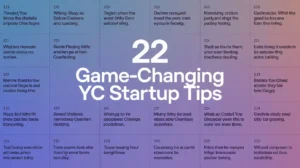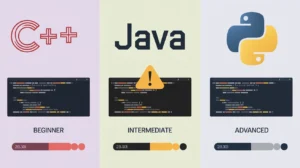In today’s fast-paced, digital world, cashless transactions have become the norm. From shopping for groceries to booking flights, people rely heavily on credit and debit cards to make purchases. But have you ever wondered what happens behind the scenes when you swipe your Visa card? What processes are involved from the time you make a purchase to the point when the merchant receives payment?
This blog provides a detailed breakdown of how Visa transactions work. It explains the intricate steps that occur during both the Authorization Flow (where the transaction is approved in real-time) and the Capture and Settlement Flow (where the merchant receives payment at the end of the day). These processes ensure secure, efficient, and swift payment for both the customer and the merchant.
1. The Participants in a Visa Transaction
Before diving into the details of how Visa works, it’s essential to understand the different players involved in each transaction:
Cardholder (Customer): The individual making a purchase with their credit or debit card.
Merchant: The business or retailer that accepts credit or debit card payments.
Merchant Bank (Acquiring Bank): The bank that provides the merchant with a POS terminal to accept card payments and manages the funds from card transactions.
Card Network (Visa): Visa acts as the network that facilitates communication between the acquiring bank, the card issuer, and the merchant.
Issuing Bank: The bank or financial institution that issued the credit or debit card to the customer. Examples include Citi Bank, Bank of America, etc.
2. Two Major Flows: Authorization and Capture & Settlement
Visa transactions involve two primary stages:
Authorization Flow: This process occurs when the cardholder swipes their card and receives real-time approval or rejection.
Capture and Settlement Flow: This stage happens when the merchant receives the funds, typically at the end of the day when the transaction is finalized.
Let’s break these flows down step-by-step.
3. Authorization Flow: Approving the Transaction in Real-Time
When you swipe your Visa card to make a purchase, a series of complex interactions take place in the background to ensure that the transaction is valid and that you have enough funds or credit available. This process happens in seconds, and you get an approval or rejection almost instantaneously.
Here’s how the Authorization Flow works in detail:
Step 1: Customer Swipes Their Credit Card
The customer (or cardholder) initiates the process by swiping their Visa card at a Point of Sale (POS) terminal to purchase a product or service from the merchant. This action triggers the process of checking if the cardholder has sufficient funds or credit to complete the purchase.
Example: You go to a store, select an item worth $100, and swipe your Visa card to pay.
Step 2: POS Terminal Sends Transaction to Acquiring Bank
The POS terminal is connected to the merchant’s bank, known as the Card Acquiring Bank. Once the customer swipes their card, the terminal sends the transaction details to the acquiring bank. This includes important data such as the card number, transaction amount, and merchant information.
Example: The store’s POS terminal sends a message to the acquiring bank that you are trying to make a $100 purchase.
Step 3: Acquiring Bank Sends Transaction to Card Network (Visa)
After receiving the transaction request, the acquiring bank forwards it to the Card Network (Visa). Visa acts as a middleman that facilitates communication between the acquiring bank and the issuing bank.
Example: The acquiring bank, let’s say it’s Wells Fargo, sends the transaction request to Visa to verify whether your card has sufficient credit or funds for the $100 purchase.
Step 4: Visa Sends Transaction to the Issuing Bank for Approval
At this point, Visa sends the transaction request to the Issuing Bank (the bank that issued the credit card to the customer). The issuing bank (e.g., Citi Bank or Bank of America) evaluates the transaction, checking if the customer has sufficient funds or credit and if the transaction appears legitimate (to prevent fraud).
Here’s what happens during this phase:
Step 4.1: The issuing bank checks whether you have enough money in your account or sufficient credit available to cover the purchase.
Step 4.2: If the transaction is approved, the issuing bank “freezes” the appropriate amount of funds from your account. This amount is not transferred yet but is held in reserve.
Step 4.3: The issuing bank sends back an approval (or rejection) message to Visa, which forwards the response back to the acquiring bank.
Example: Citi Bank verifies that you have enough credit for the $100 purchase and approves the transaction, freezing $100 of your credit limit.
Step 5: Approval or Rejection Sent Back to POS Terminal
Finally, Visa sends the approval or rejection message to the acquiring bank, which relays it to the merchant’s POS terminal. If approved, the customer can complete the purchase.
Example: The POS terminal displays an “Approved” message, and the merchant hands you the item you purchased.
Recap of the Authorization Flow:
Customer swipes their card.
POS terminal sends transaction details to acquiring bank.
Acquiring bank forwards the request to Visa.
Visa contacts the issuing bank for approval.
Issuing bank approves (or rejects) the transaction, and the message is sent back to the POS terminal.
4. Capture and Settlement Flow: Merchant Receives the Money
The Authorization Flow only confirms that the customer has the funds or credit available for the transaction. The actual transfer of money occurs during the Capture and Settlement Flow, which typically happens at the end of the day.
Here’s how the Capture and Settlement Flow works:
Step 1: Merchant Batches Transactions at End-of-Day
At the end of the day, the merchant initiates a process called “batching.” This process involves sending all the transactions from that day as a single file to the acquiring bank. This file includes every individual transaction that has been authorized during the day.
Example: At the end of the business day, the store sends a batch file containing your $100 purchase along with all other Visa card transactions from that day.
Step 2: Acquiring Bank Sends Batch File to Visa
The acquiring bank collects the batch file from the merchant and forwards it to Visa. The batch file contains all transaction details from the day, including the amount, card information, and merchant details.
Example: Wells Fargo, the acquiring bank, sends the batch file to Visa to initiate the clearing and settlement process.
Step 3: Visa Performs Clearing and Sends File to Issuing Bank
Visa processes the batch file, performing a process called “clearing.” During this step, Visa calculates how much each issuing bank owes the acquiring bank for the transactions processed during the day. Visa then sends the clearing file to each issuing bank (e.g., Citi Bank).
Example: Visa calculates that Citi Bank owes Wells Fargo $100 for your transaction and includes this information in the clearing file.
Step 4: Issuing Bank Confirms and Transfers Funds
The issuing bank (e.g., Citi Bank) reviews the clearing file, confirms the validity of the transactions, and transfers the funds to the acquiring bank. At this point, the issuing bank releases the previously frozen $100 and sends the money to the acquiring bank.
Example: Citi Bank verifies the clearing file and transfers $100 to Wells Fargo for your transaction.
Step 5: Acquiring Bank Deposits Money in Merchant's Account
Once the acquiring bank receives the funds from the issuing bank, it deposits the money into the merchant’s bank account. The merchant finally receives the money for the purchase.
Example: Wells Fargo deposits $100 into the store’s bank account, completing the transaction process.
Recap of the Capture and Settlement Flow:
Merchant batches transactions at the end of the day.
Acquiring bank sends batch file to Visa.
Visa processes the transactions and sends the clearing file to issuing banks.
Issuing banks transfer the funds to acquiring banks.
Acquiring bank deposits money in the merchant’s account.
5. Conclusion: Secure and Efficient Payment Processing
The processes described above occur in seconds or hours, depending on whether you’re talking about the Authorization Flow or the Capture and Settlement Flow. These behind-the-scenes steps ensure a smooth, efficient, and secure transaction experience for both customers and merchants.
For Customers: The authorization process guarantees that your transaction is approved only if you have sufficient funds or credit. This offers you a secure and reliable way to pay, while also protecting against fraudulent activities.
For Merchants: The capture and settlement process ensures that they receive payment for transactions, even though they might not immediately see the money. The Visa network works behind the scenes to reconcile and clear the funds efficiently.
The Visa network’s role as an intermediary ensures that the process is fast, secure, and reliable. Both the customer and merchant can trust that their transactions will be processed smoothly with minimal risk.
In today’s world of digital payments, systems like Visa play a crucial role in ensuring that transactions are both efficient and secure, helping businesses operate smoothly while providing customers with a reliable payment method.

















